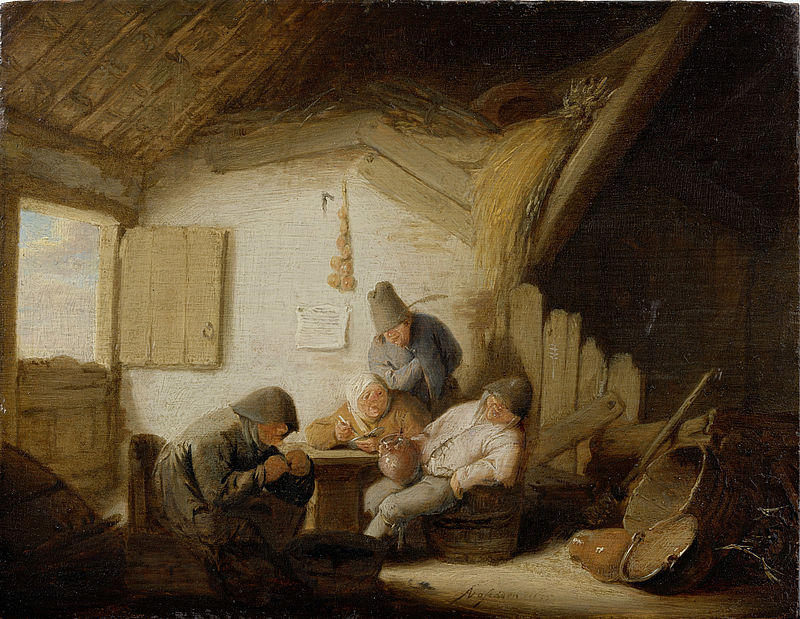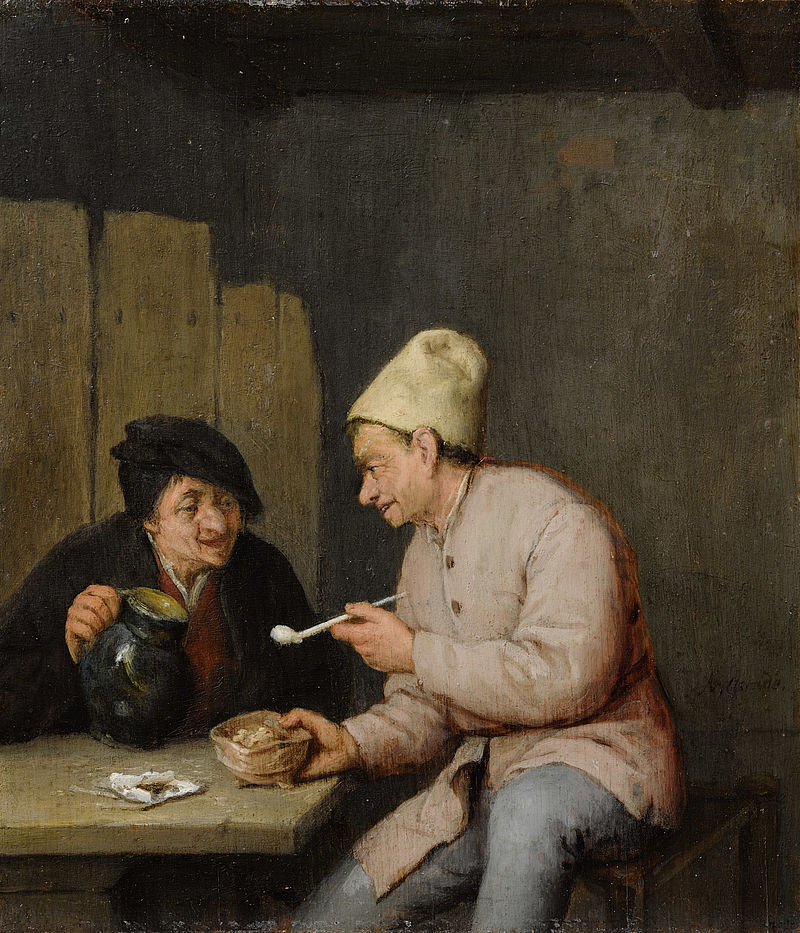Village Tavern with four Figures
Adriaen van Ostade (1610 - 1685)
Framesize 27.00 x 31.20 x 5.00 cm
Like the Smoker and Drinker, this painting was done during the period when Ostade developed the 17th century peasant interior as an independent genre.
The focus is always on small groups of figures drinking – tipsy, in a drunken stupor, their faces grimacing and distorted. There are also scenes with peasant-folk rampaging amid overturned objects and furniture. The mostly well-to-do citizens who purchased Ostade’s pictures found amusement in the riotous behaviour of what they considered the peculiar, backward country bumpkins. The tradition of the Dutch peasant genre goes back to the 15th century, and in the 16th century it appears in the work of the Flemish painter Pieter Brueghel the Elder (1525–1569).
Ostade’s Village Tavern is a table in the corner of a barn. Scores are visible, chalked on one of the boards. The light falling from the side through an opening brings out the structure of the lime-washed wall and a bundle of straw. The three men have their hats pulled down over their grimacing faces. Ostade adopted this stylistic device from Adriaen Brouwer who, in his 1620s and 1630s pictures, shows extremes of mood and emotion. This influence is evident in Ostade’s early work, but he soon arrived at a distinctive expression of his own.
In this picture, the allegorical aspect of vice inherent in the subject is not so pronounced. Light plays a major role; together with the muted colours, it causes the room and the figures to merge into an overall ambience, and the vivid chiaroscuro indicates the influence of the young Rembrandt.
OEHRING Erika: Ostade Adriaen van, Village tavern with four figures, in: DUCKE Astrid, HABERSATTER Thomas, OEHRING Erika: Masterworks. Residenzgalerie Salzburg. Salzburg 2015, p. 50



